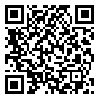Volume 3, Issue 4 (Occupational Medicine Quarterly Journal 2012)
tkj 2012, 3(4): 33-38 |
Back to browse issues page
Download citation:
BibTeX | RIS | EndNote | Medlars | ProCite | Reference Manager | RefWorks
Send citation to:



BibTeX | RIS | EndNote | Medlars | ProCite | Reference Manager | RefWorks
Send citation to:
Maghsoudipour M, Aminiam O, Mansouri P. Occupational risky exposure in vitiliginous patients. tkj 2012; 3 (4) :33-38
URL: http://tkj.ssu.ac.ir/article-1-88-en.html
URL: http://tkj.ssu.ac.ir/article-1-88-en.html
Department of Ergonomics, University of Social Welfare and Rehabilitation Sciences, Tehran, Iran
Abstract: (8147 Views)
Introduction: In previous studies the appearance of vitiligo following occupational exposure has been defined. This study evaluates high risk occupational exposures before the onset of disease among patients with vitiligo
Methods: All vitiliginous patients refered to dermatologic clinic of Imam Hospital, were asked about age of onset, recent and previous occupations, risky occupational exposures, autoimmune systemic disease and family history. Laboratory evaluation about diabetis melitus and thyroid disease was performed.
Results: Of 135 patients included in the study, 70 (51.85%) patients had an occupation and 65 (48.14%) were unemployed. Of 70 occupational cases, 23 (32.9%) had a risky occupational exposure. The most prevalent risky occupational exposures were exposure to detergents, oil colour, print dye and pesticides. Occupational cases were divided into two groups: with risky occupational exposure and without risky exposure. In risky occupational exposure group, the ratio of men to women was significantly higher. There was a significant difference in distribution of the disease between two groups and extremities were significantly more involved in risky exposure group. Age at onset was significantly lower in non-risky exposure group. None of the patients with risky occupational exposure used skin protction.
Conclusion: High prevalence of risky occupational exposure may indicate it as a risk factor for vitiligo. Knowledge about these risky chemicals and prevention, may reduce occupational vitiligo.
Type of Study: Research |
Subject:
occupational medicine
Received: 2012/06/19 | Accepted: 2020/04/14 | Published: 2020/04/14
Received: 2012/06/19 | Accepted: 2020/04/14 | Published: 2020/04/14
| Rights and permissions | |
 |
This work is licensed under a Creative Commons Attribution-NonCommercial 4.0 International License. |





